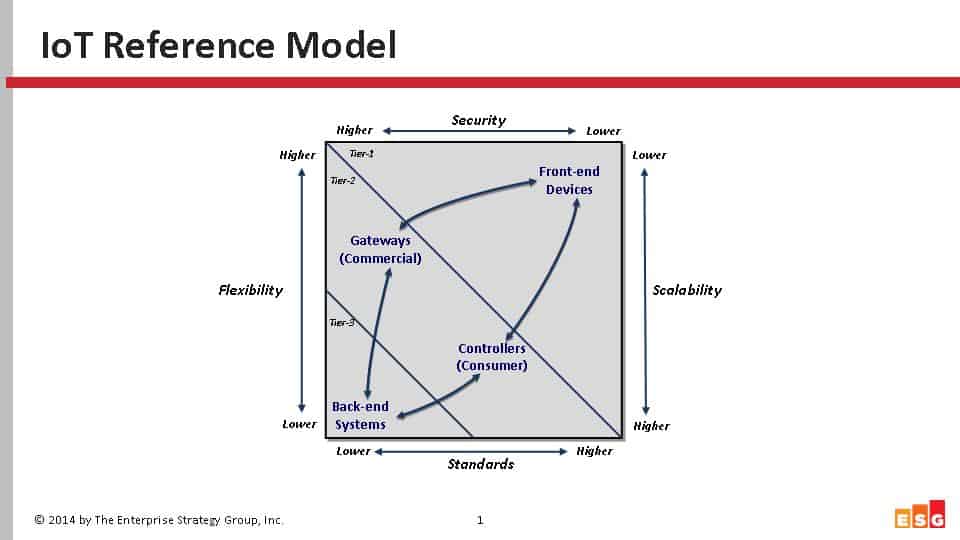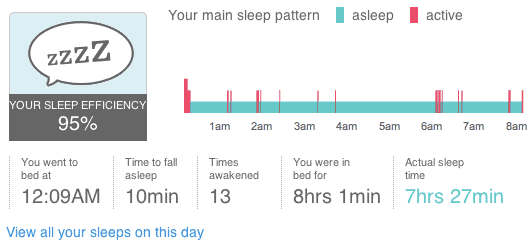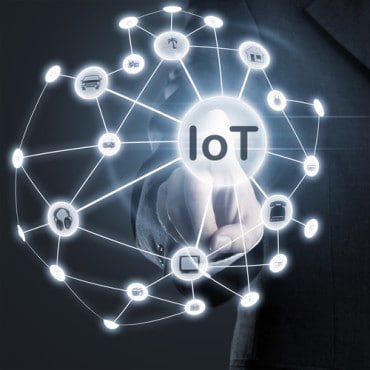
An effective IoT architecture features middle-tier gateways and controllers to manage high volumes of continuous data, giving companies only needed data.
The Internet of Things (IoT) is attracting a huge amount of attention these days, although much of it seems directed at simplistic use cases or the shortcomings of today’s solutions. This is because the industry is missing consensus on the overall IoT architecture, standards, and reference models. While all of the leading vendors are working on their strategies for networked “Things,” few have evolved their thinking to a point where they are willing to publicly discuss key constructs of IoT architecture.
The unique challenge of IoT is the high volume of sensory data and the complex challenges this creates in managing and leveraging this data. This challenge extends to enterprises of all sizes that are interested in connecting more effectively with customers and driving higher levels of efficiency across the value chain.
Consumers will largely be insulated from the IoT data management and analysis challenges by applications that hide this complexity. Nevertheless, IoT begins with front-end sensor data and ends with back-end systems using analytics and decision-making capability to drive intelligent actions. What’s missing from the IoT discussion is how to best manage the movement of this data from the front-end to the back-end. This is where the concept of a middle tier supporting controllers and gateways fits in.
- Front-End Edge Devices. Front-end edge devices vary in intelligence and are nearly always tasked with data collection. Front-end devices therefore usually contain one of more sensors. The intelligence of front-end devices varies from simple sensors to intelligent micro-process controlled devices. Regardless of the intelligence of the front-end device, it needs to know how to identify itself, publish data or events securely, and interact with its parent gateway or controller. Smarter front-end devices will have the capability to bi-directionally interact with upstream controller and gateways and respond to directives.
- Controllers and Gateways. Controllers and gateways are middle-tier components that primarily collect information from front-end devices. However, the role of controllers (consumer focused) and gateways (commercial focus) in consuming this information varies widely. In some cases a gateway will primarily be focused on data collection, data aggregation, and then transmission of the data to a back-end system. The periodicity associated with this data collection, aggregation, and transmission will vary from real-time streaming and queuing to batch processing. In other situations, the gateway or controller will also analyze and act on the data based on a predefined policy in order to automatically interact with front-end devices. The location of controllers and gateways will also vary based on the intelligence and constraints of the network connection to the front-end devices, environmental factors, and security concerns. Common networking between edge devices and controllers/gateways includes BT, CAN, LAN, WAN, WIFI, USB, and Internet.
- Back-End Systems. Back-end systems will typically function as the repository for information transmitted from controllers and gateways providing system of record capabilities. In addition to data persistence, other data-centric activities include data enrichment and data analysis. The analysis sets the stage for decisioning and business processing that support actions. Finally, closed-loop processing allows the opportunity for learning and business process improvement. It is possible for back-end systems to interface directly with the device tier, but this will only be the case for applications that do not have high scalability requirements. As we already noted, some or most of these activities can also be performed by the middle tier.
IoT Architecture: An Illustration
This architecture describes a three-tier model that provides the highest level of flexibility and is already finding its way into a variety of commercial and consumer products. Scalability, security, standards, and flexibility are key design points of this model.
Above is a schematic of this IoT architectural reference model. This model shows the relationships between the three tiers and indicates the importance of scalability, security, standards, and flexibility to the model.
Why a Middle Tier? Use Cases
The need for a middle tier is contingent to the style of data collection that occurs in the front-end. Some sensors “continuously” send data while others only send data when specific conditions are met such as exceeding a threshold. While continuous data feeds provide a richer opportunity for understanding trends and patterns, a great deal rides on the specific use case. For example, a moisture sensor under your HVAC system doesn’t need to continuously report data—it just needs to send an alert and shut down the system if it is triggered. Alternatively, the Fitbit on your wrist is designed to “continuously” collect data so that back-end analytics can help you understand daily and monthly trends across a variety of biometrics.
Middle-tier gateways and controllers are needed to manage high volumes of continuous data. Network efficiency, security, and workload distribution are the primary drivers for gateways. High expected IoT data volumes means efficient use of networks is critical. The best way to reduce network traffic is to send less data, so compression is a logical starting point. But gateways can be even more effective at reducing traffic by acting as local drop boxes for collecting, aggregating, and summarizing data before shipping the results to the back-end. Gateways also can provide an added layer of security and isolation for back-end systems. Depending upon system design, the gateway can offer the ability to offload and distribute some back-end processes, especially those associated with filtering and analytics.
Centralization, consolidation of data, and process coordination are the primary drivers for using controllers in a consumer environment. A controller will often be located in the home and combine data collection, analysis, and processes the drive actions. So the controller will collect data specific to presence (biometrics) and the environment (natural and physical) and leverage user-defined policy to make decisions and recommendations while continuously adapting to changing preferences and environmental factors. Consequently, the existence of a middle tier with gateways and/or controllers helps enterprises deliver IoT experiences that are secure, scalable, flexible, and adhere to standards.






























